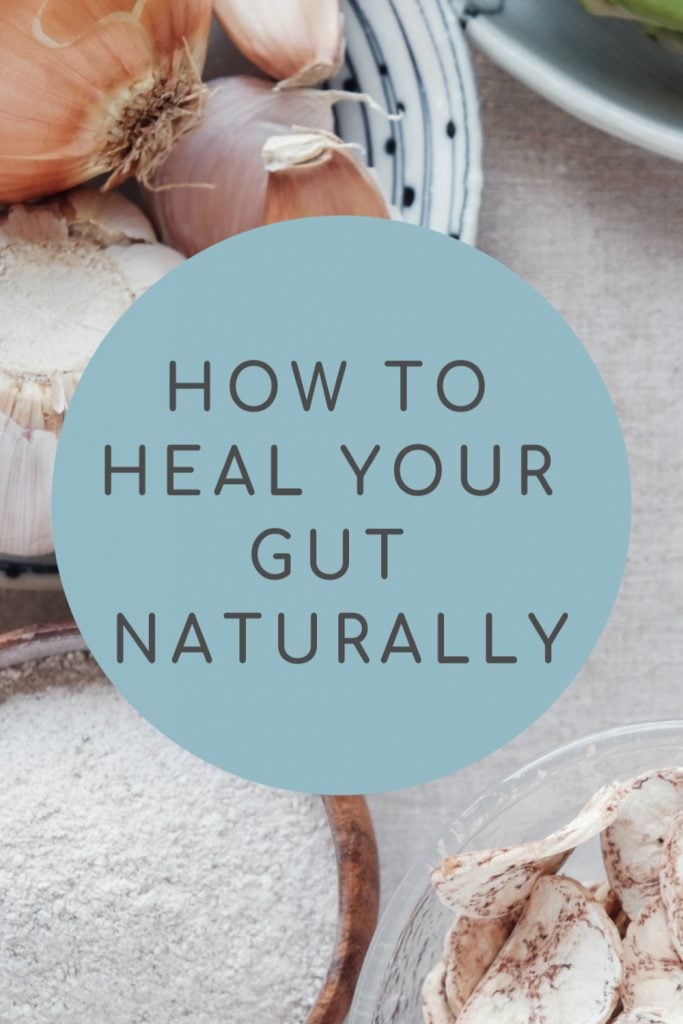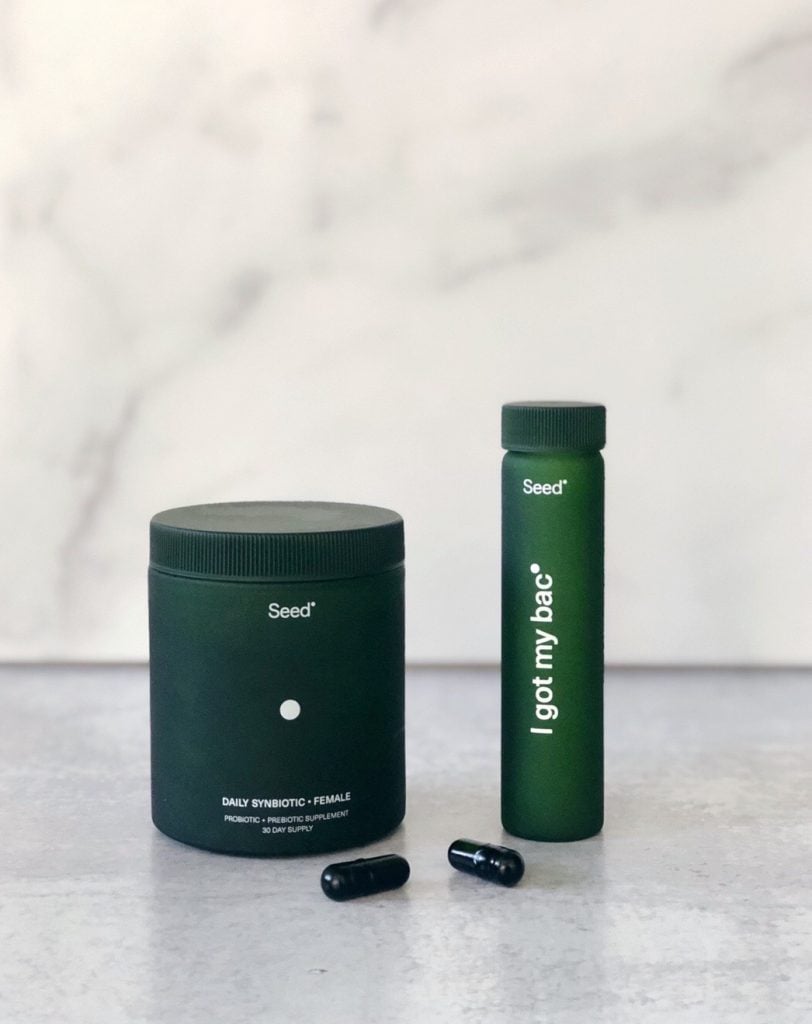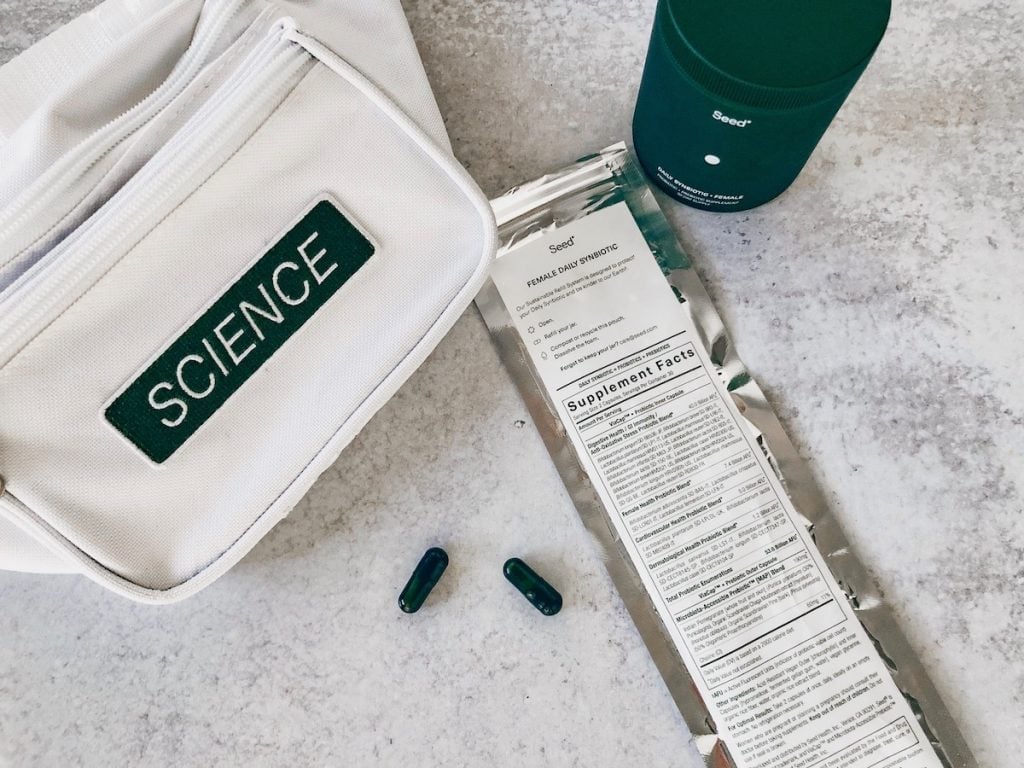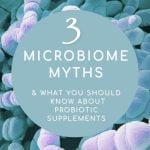3 Microbiome Myths + Get to Know Seed Synbiotic
Our team has been on the hunt for the best probiotic supplements for 15 years. We’ve learned a lot about the importance of the microbiome (and some microbiome myths) along the way. And because the science is evolving rapidly, we’ve had to unlearn a lot of what we previously believed about health.

This article, plus our Healthy Microbiome for Kids post, clears up some common myths about the microbiome – and specifically, the role probiotics play in your health.
The Basics of Healing Your Gut
The essentials for healing your gut are:
- Use antibiotics only when absolutely necessary.
- Don’t be hyper-vigilant about dirt and hand sanitizer.
- Eat whole foods and incorporate fermented foods as often as possible.
- Avoid sugar and processed foods (they can lead to leaky gut syndrome).
- Support the gut with a high-quality probiotic supplement.
Dr. Zach Bush, internationally recognized educator and thought leader on the microbiome as it relates to health, disease, and our food system, explains the overuse of antibiotics. “Antibiotics wipe out the microbiome, decimating both the bad bacteria and the good – leaving your immune system at a pretty vulnerable state.”
ION* Gut Support gives the body the tools to rebuild its biome. ION* can help with leaky gut by closing the tight junctions in the gut membrane, where about 80% of your immune system lies.
ION* creates an optimal environment in your gut lining by providing the framework for
bacterial communication, supporting digestion and absorption of vitamins, minerals, and other
essential nutrients that your body needs to function.
Have you noticed your favorite yogurt container now touts the word “PROBIOTIC” in a font larger than the brand logo? You can’t walk down a grocery aisle without being bombarded by products – everything from food items to skin care to even pillows – claiming to contain gut-healing probiotics.
Live Cultures Are Only Part of the Probiotic Equation
It’s not necessarily a bad trend. Most of the products touting these claims DO contain live cultures of beneficial bacteria. But it is a little misleading. Most of these things are not actually probiotics, at least according to scientific standards.
The scientific definition of probiotics is “live microorganisms that, when administered in adequate amounts, confer a health benefit on the host.”
So to be considered a probiotic, a product must meet these requirements:
- Live microorganism – ‘Live’ means survivability in this case. The strain of beneficial bacteria must survive all the way to the colon, where your body can actually benefit from the bacteria.
- Adequate amounts – Each probiotic strain is associated with an effective dosage or Colony Forming Units, which is determined through clinical study.
- Health benefit – strain-specific, clinically-studied benefits shown to have an effect within the human body, not just lab tested mice.
We’ve tried dozens of brands of probiotics – designed for adults, for kids, for women only, etc. – and we’ve never found one with as much scientific backing as Seed’s Daily Synbiotic. A synbiotic is a balanced combination of probiotics and prebiotics. Prebiotics are non-digestible carbohydrates that feed the good bacteria present in our colon. In essence, they act as a rich fertilizer for your gut’s healthy bacteria.
Seed contains 24 DNA verified, human-based, naturally-occurring probiotic bacterial strains with a prebiotic and a strong capsule. If you’d love to try it, use the code GCM15 to get 15% off of your first month of Seed’s Daily Synbiotic subscription.
Before we get into the microbiome myths, let’s start with a little trivia. Did you know your microbiome weighs 3.5 pounds?
That’s about the same weight as your brain. And when you realize the role your gut microbes play in digestion and communicating with important body functions, it’s easy to see how your bacteria could be calling the shots in your body.
The Importance of a Robust Microbiome
In 2006, Jeffrey Gordon, a biologist at Washington University in St. Louis, reported that the microbiomes of obese mice had something in common. Compared with their lean counterparts, the heavier mice had fewer Bacteroides and more Firmicutes species in their guts. (source)
Gordon also found that the microbiome associated with obesity is transferable. In 2013, his lab took gut bacteria from pairs of human twins in which only one twin was obese, then fed the samples to mice. The mice given bacteria from the obese humans quickly gained weight. The others did not.
What most people take away from that study is that we want an abundance of the good, lean, energy harvesting bacteria in our bodies!
But those good bacteria will only thrive if we give them a hospitable home. If you received the bacteria of a completely healthy, fit person and then didn’t feed them properly (or crowded them out with sugar and other bad bacteria encouraging foods), they’d die off.
That’s why diet and a proven probiotic supplement are so important.
The Top 3 Microbiome Myths
Here are three of the biggest myths about how probiotics affect the microbiome and some research to help clear them up.

Myth #1: More CFU (Colony Forming Units) is Better
Maybe a doctor or naturopath has told you to look for more than 20 billion CFU in a probiotic. Colony-forming units is the term that indicates how many bacteria in the sample are capable of dividing and forming colonies.
A bigger number on the bottle doesn’t necessarily mean better results. The best dose, per strain, is one that has been proven to deliver positive outcomes in humans.
Another issue with using CFU as a measurement is that it has lost some of its meaning in the probiotic marketing landscape. If a supplement claims to contain 50 billion CFUs (usually labeled “at time of manufacture”) but most of them are no longer alive when your body needs them, what’s the point?
AFU (Active Fluorescent Units) is a new measurement that calculates the viable cells more precisely, including ones that are effective but not necessarily culturable (not counted in a traditional CFU).
Myth #2: Probiotics Need to Be Refrigerated
This myth runs deep. Most of the supplement section workers at well known health stores still point you to the refrigerator when you ask about probiotics.
Bacteria are sensitive to light, temperature, and moisture so a probiotic should be developed to endure a variety of storage conditions. Technological innovations like lyophilization (freeze-drying) can render probiotics ‘dormant’, meaning they remain in an inert, shelf-stable state until they reach the digestive tract and are reactivated.
The more important thing to look for is demonstrated survivability through improved delivery technologies. Your digestive system is warm. The bacteria need to reach the colon to be effective, so you should choose a supplement that’s proven to contain bacteria that can survive the journey from throat to colon.
If you’re ready to try Seed, use code GCM15 to get 15% off of your order.
Myth #3: Probiotics Only Work if They Stay in the Digestive System
Learning about the benefits of transient microbes was fun for us. Seriously – there’s a course AND a test to become an affiliate with Seed, and we’re proud to tell you we scored 100%!
Probiotics typically don’t take up residence in your gut. Compared to the tens of trillions of microbes already rooted in your intestinal tract, most probiotics don’t contain enough new bacteria to make a significant difference in the composition of your microbiome. Large numbers of newcomers moving in and displacing your existing bacteria could alter the unique balance of your ecosystem within and trigger unintended consequences.
So how do these microbes work?
Probiotics are transient microbes. They travel through your colon, interacting with your immune cells, gut cells, dietary nutrients, and existing bacteria to deliver benefits.
Some bacteria strains enhance the gene expressions involved in tight junction signaling (or prevent leaky gut syndrome). Others trigger neurotransmitters that stimulate muscle contractions for increased motility (more regular bowel movements). Yet other bacteria produce byproducts like short-chain fatty acids, which have been extensively shown to be beneficial for metabolic and immune health, and even folate, a key driver of cellular and reproductive health.
Why Seed Daily Synbiotic?
Seed’s commitment to scientific research and results is the main reason our team gave them a try. But their commitment to sustainability is high up the list for us as well.

Listen, we get tired of supplements in plastic bottles. With Seed, your initial shipment arrives in a reusable dark green glass jar, shipped in a mushroom based packaging. Your monthly refill comes in a natural, corn-based insulated package that dissolves in water. Because there’s no refrigeration necessary, it’s easy to travel with Seed. Plus, you get a free glass vial that fits a week’s dose.
Beyond their sustainability initiatives, we’re impressed with the results we’ve experienced from taking Seed for the past few months – fewer instances of gas and bloating, major BM improvements, fewer skin breakouts, and one of us feels better equipped to keep up her no-sugar diet (currently at 11 weeks).
Seed is also vegan and doesn’t contain gluten, preservatives, and common allergens.
Seed’s probiotic strains have collectively been studied in 23 human clinical studies including double-blind, placebo-controlled trials conducted in the United States, United Kingdom, Spain, Japan, and Italy.
Study findings (found in peer-reviewed sources like Journal of Clinical Gastroenterology, Scientific Reports Nature, and JAMA Dermatology, and are all indexed to PubMed) demonstrate statistically significant improvements in multiple markers of gastrointestinal, cardiovascular, and dermatological health.
Seed adheres to FDA regulations and also looks to higher global standards like the European Food Safety Authority (EFSA) and Japan’s Foods for Specified Health Uses (FOSHU) in the manufacture and translation of probiotics.
If you have any other microbiome myths you’d like debunked, let us know in the comments. And if you feel like you haven’t found your ideal probiotic / prebiotic option yet, this is a great time to try Seed with our special discount.
Always seek the advice of your physician, naturopath, or qualified healthcare provider for any questions you have regarding a medical condition, and before undertaking any diet, exercise or other health related program.


